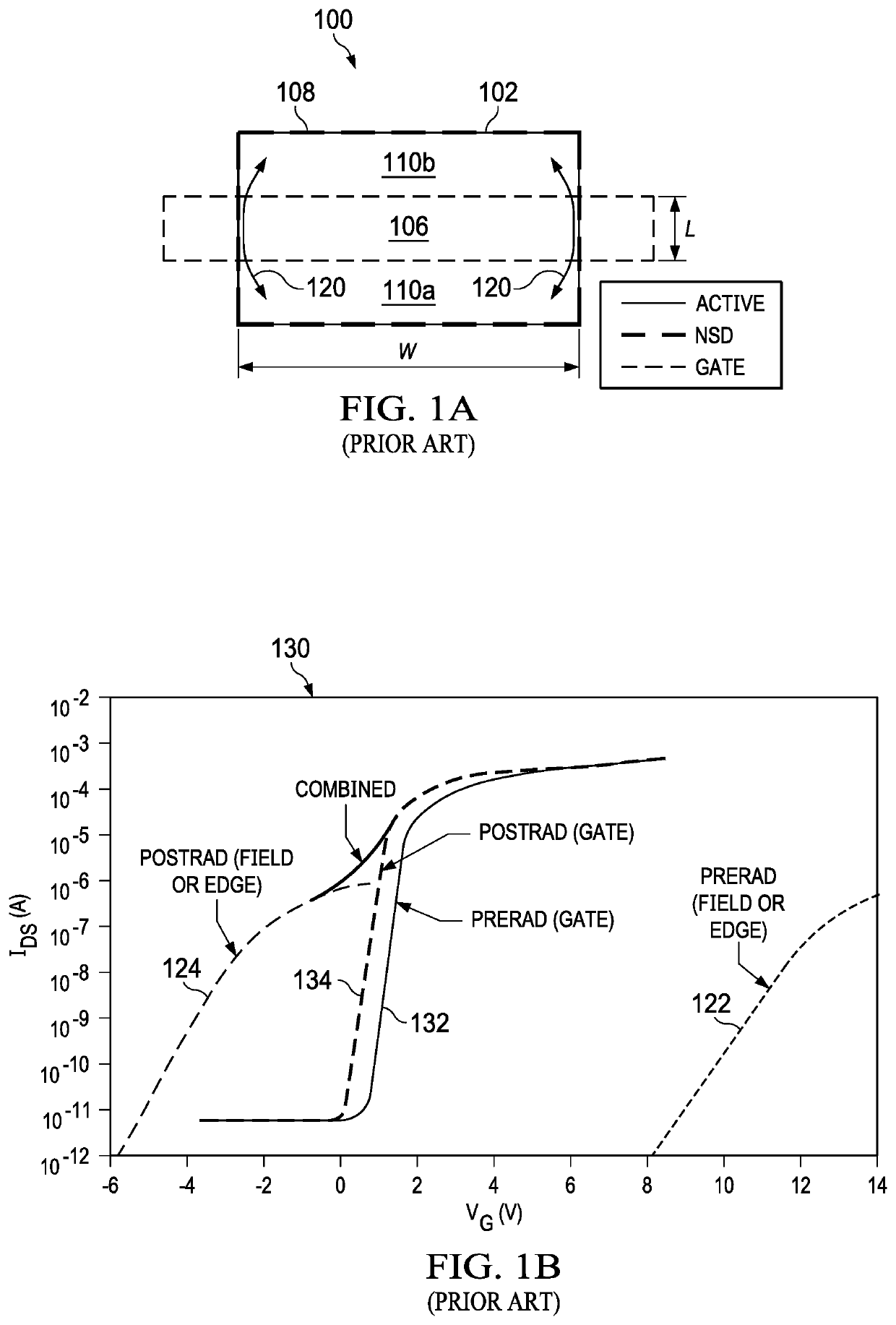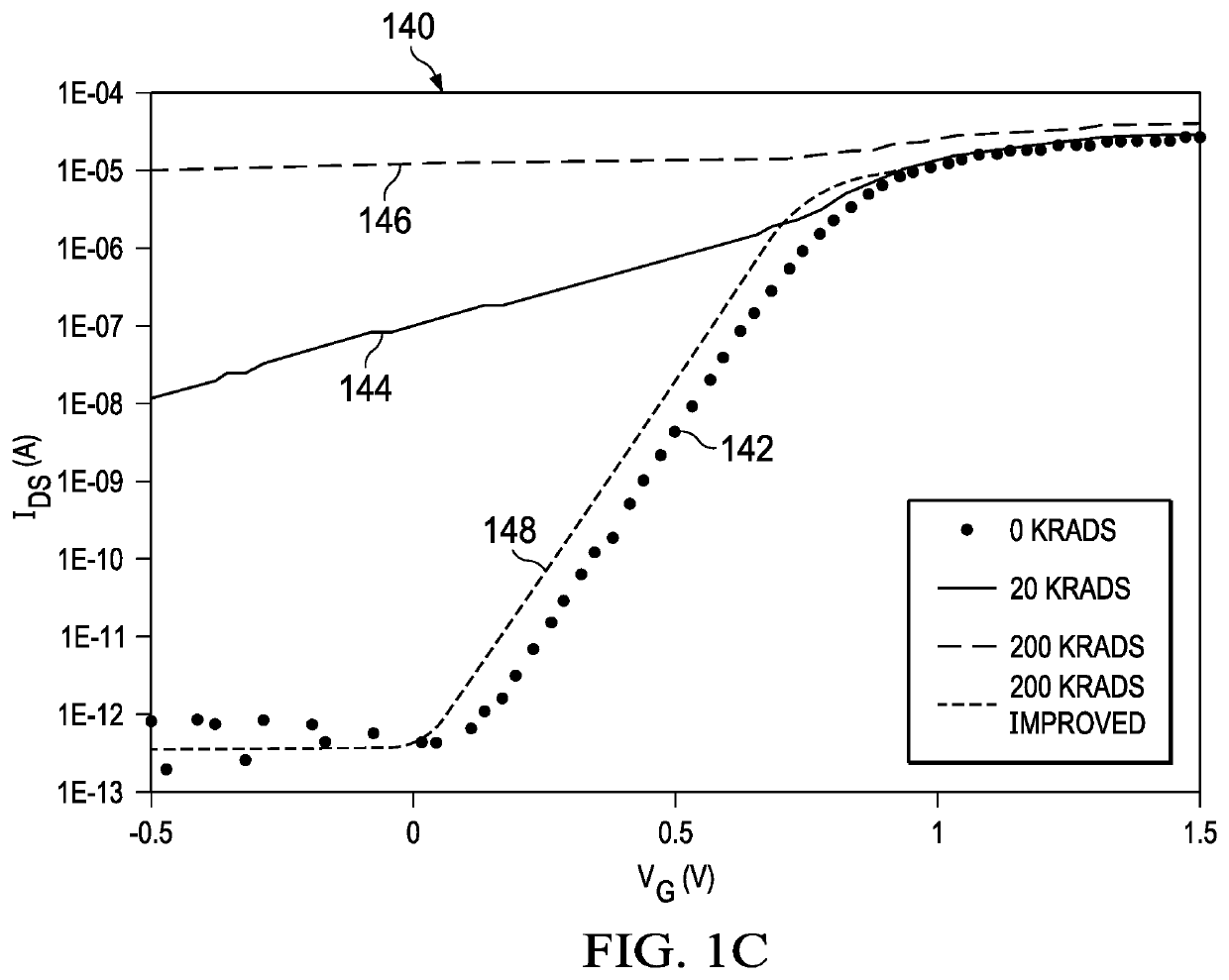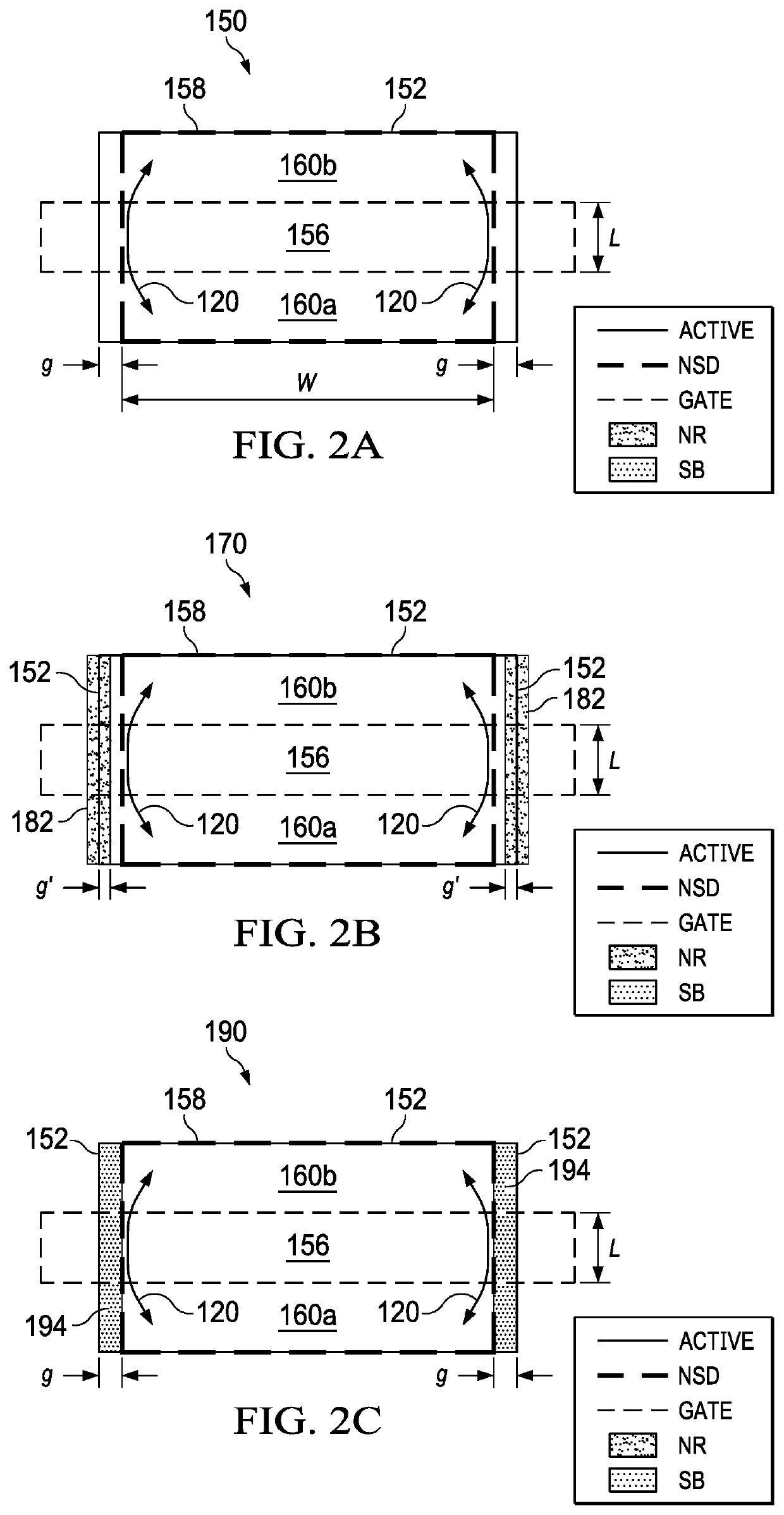Devices and Methods for Radiation Hardening Integrated Circuits Using Shallow Trench Isolation
- Summary
- Abstract
- Description
- Claims
- Application Information
AI Technical Summary
Benefits of technology
Problems solved by technology
Method used
Image
Examples
Embodiment Construction
[0033]The following Detailed Description is merely exemplary in nature and is not intended to limit the various embodiments or the application and uses thereof. Furthermore, there is no intention to be bound by any theory presented in the preceding background or the following detailed description. Embodiments of the present disclosure are generally directed to semiconductor devices and integrated circuits, and methods for fabricating the same. Conventional techniques related to integrated circuit device design and fabrication may not be described in full detail herein, and the various tasks and process steps described herein may be incorporated into a more comprehensive procedure or process having additional steps or functionality. In particular, various steps in the manufacture of semiconductor-based integrated circuits are well-known and so, in the interest of brevity, many conventional steps may be mentioned only briefly herein or may be omitted entirely without providing well-kn...
PUM
 Login to View More
Login to View More Abstract
Description
Claims
Application Information
 Login to View More
Login to View More - R&D
- Intellectual Property
- Life Sciences
- Materials
- Tech Scout
- Unparalleled Data Quality
- Higher Quality Content
- 60% Fewer Hallucinations
Browse by: Latest US Patents, China's latest patents, Technical Efficacy Thesaurus, Application Domain, Technology Topic, Popular Technical Reports.
© 2025 PatSnap. All rights reserved.Legal|Privacy policy|Modern Slavery Act Transparency Statement|Sitemap|About US| Contact US: help@patsnap.com



